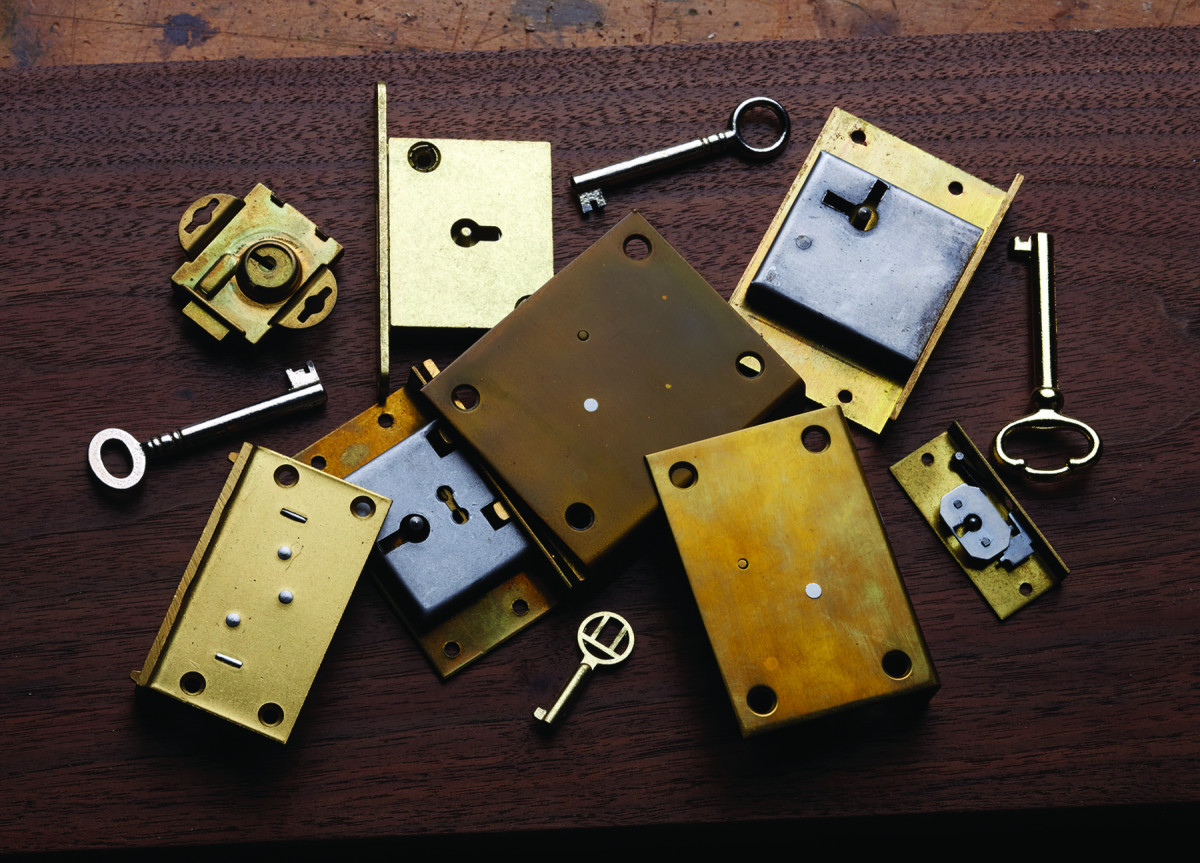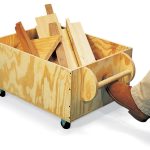We may receive a commission when you use our affiliate links. However, this does not impact our recommendations.

The key to selection is knowing the terminology and how a lock works.
Locks protect our worldly goods from outsiders who wish to take those goods from us. In earlier days, the use of furniture locks had a somewhat different purpose.
It used to amaze me that spice box doors had locks. Sure, spices were expensive in the past, but a party intent on absconding with your spices could just as easily walk away with the entire box.
When I learned that servants would pinch the spices, or nip from the sugar stash, I better understood the use of locks back in the day.
In almost any hardware catalog, there can easily be several pages of locks shown. As you thumb through the choices, you could get the idea that there are many types from which to choose. All furniture locks, however, fit into one of three primary types: full-mortise, half-mortise and surface-mounted (these can be plain or fancy).
Within those three types, there are a few different designs: locks for desk lids, drawer and door locks and box and chest locks.

Distinct difference. The lock body of a full-mortise lock differs greatly from the half-mortise style – no plate is common, but the centered keyhole is not.
Unlock the Lexicon
Before we delve into designs, you should become familiar with terms used in lock-speak. There are only a handful, and knowing these is a great place to start. But keep in mind that these terms are evolving and are different from company to company – and even among our editors.
Full-mortise lock. The body of this lock is housed within the walls of your project. It was seldom used prior to the introduction of power tools because they make it easier to cut the narrow and deep mortises. When installed, it does not show except for the selvage.
Selvage. This is one term that’s big on evolution. To some woodworkers and lock companies, selvage refers to the edge of a lock through which the bolt extends (this is the definition I use in this article). To other lock aficionados it’s the distance from the top edge of the lock to the center of the pin. Selvage is found on full-mortise and half-mortise locks, but not on the surface-mounted style. (By the way, “selvage” and “selvedge” are both accepted spellings.)
 Bolt. In door and drawer locks, it’s a rectangular piece that extends into the furniture to hold the item secure. In a chest or box lock, it’s the main lever inside the lock body that slips from side to side to catch the strike.
Bolt. In door and drawer locks, it’s a rectangular piece that extends into the furniture to hold the item secure. In a chest or box lock, it’s the main lever inside the lock body that slips from side to side to catch the strike.
Strike. This piece is attached to the lid of boxes and chests. It generally has short protrusions on which the main lever catches. A strike used with drawer and door locks (no protrusions) helps to reduce wear on the furniture from the constant sliding of the bolt.
Half-mortise lock. These locks were often used on period furniture from the 18th and early 19th centuries. The selvage and backplate of half-mortise locks are set flush with a workpiece’s surface. The lock’s body is mortised into the workpiece and a keyhole is cut in from the front face of the workpiece. (This design was well-suited for those working wood before the advent of power tools.)
Backplate. This is the face of the lock, which is typically screwed to the workpiece. The body of the lock is attached to the backplate.
Lock body. The body holds the interior workings of a lock.
Keyhole. As the name implies, this is the workpiece hole through which the key slips over the pin. Often, the keyhole is not centered in the body, so this has to be considered when installing a lock. The keyhole also determines the distance to the pin, or backset.
Backset. This is the most critical measurement when replacing or installing locks; it’s the distance between the selvage and the center of the pin.
Surface-mounted locks. The easiest-to-install locks are of this design. There is no mortising, fitting or cutting required. The lock simply screws to the back of the drawer, door or chest wall. On many of these locks, the bolt can be thrown to either side depending on which direction you turn the key. The bolt engages behind the adjacent woodwork to secure the drawer, door or lid. On antique furniture, these locks were more often found on country-style pieces.

One style, two designs. These are both half-mortise locks. The left-hand lock is for a drawer or door and the right-hand hardware is a chest lock.
Lock Designs
Desk-lid locks are the easiest to cover because these locks have one attribute that pushes them into a stand-alone group: Desk-lid locks have an angled selvage greater than 90º. These locks work with an angled profile on the rabbeted edge of the desk lid that some woodworkers use to better allow for seasonal adjustments of the lid. Often, however, half-mortise locks with a 90º selvage are used on desk lids.

Simple, not plain. This crab lock is surface mounted. It is the easiest type of lock to install; nonetheless, they can be extremely decorative.
Door and drawer locks, whether they are of the full-mortise or half-mortise type, most often have dual key slots (which means there are two openings set at 90º to each other) in the body. This allows the lock to be used when set horizontal as in a drawer lock, or vertical as when used for doors. Note: While some locks are “unhanded,” or can be used in any door application, most locks are one hand or the other. It’s best to decide whether your door is a right-hand or left-hand design to correctly order locks – companies differ in how doors are handed, so check with the supplier before ordering.

How’s it different? The slight variation that transforms a standard half-mortise lock into a desk lock is the angled selvage. (A standard half-mortise lock can also be used to secure items in your desk.)
Chest and box locks are the odd ducks of locks. While other locks have bolts that slip into mortises or behind adjacent stiles or frames, these locks require the use of a strike to lock secure – and they have only one key slot, or orientation. Chest and box locks are installed horizontally.
The strike, as well as the lock itself, should be set flush with the workpiece.

It takes three. Chest or box locks come with a third part, a strike. Protrusions on the strike become engaged with the lock’s main lever to secure your valuables.
How to Choose
Each of these lock styles and designs are available in many different sizes. Choose a style that best fits your woodworking abilities and available tools, then look to the period of work if your project is a reproduction. Also take into consideration your keyhole location and escutcheon. Placement of the escutcheon can dictate your lock size – you’ll need to match the distance to the pin with the escutcheon location.
Protecting your spices is no longer a primary concern. But if you have something to lock in or someone to lock out, there is a lock for the task.
Here are some supplies and tools we find essential in our everyday work around the shop. We may receive a commission from sales referred by our links; however, we have carefully selected these products for their usefulness and quality.








